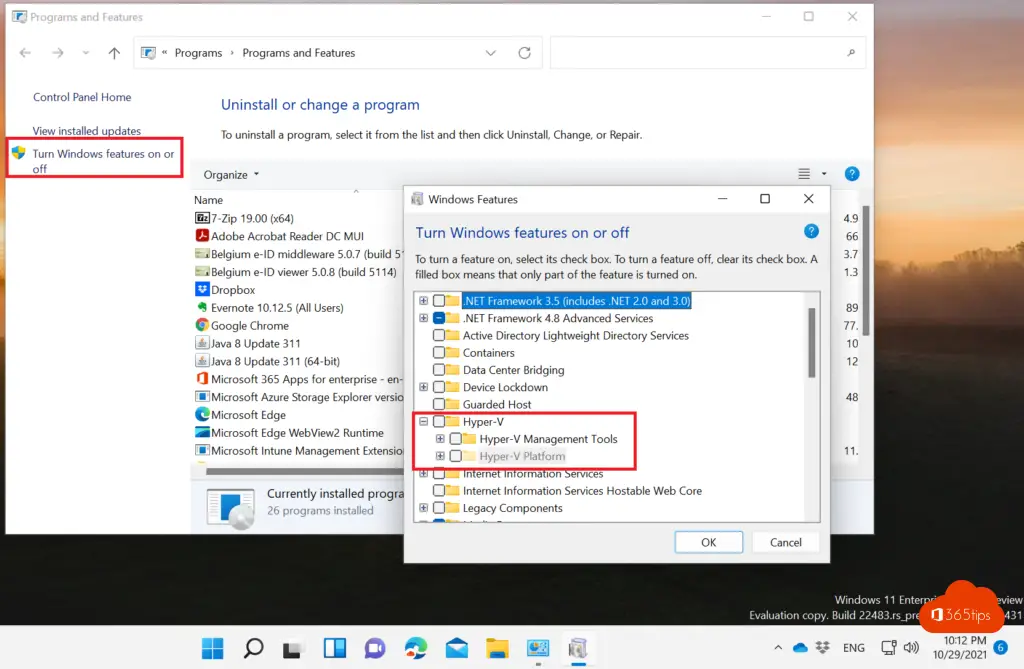

Once you have it installed, read my post on how to virtualize your current PC and run it in Hyper-V. Hyper-V lets you run multiple operating systems as virtual machines on Windows. Hardware DEP Enabled – Must enable Intel XD bit (execute disable bit) or AMD NX bit (no execute bit).Īs long as you have met those requirements, you should have Hyper-V up and running on your Windows 10 machine. How to Add Hyper-V Manager to Control Panel in Windows 10 Whether you are a software developer, an IT professional, or a technology enthusiast, many of you need to run multiple operating systems. Read my post on how to enable virtualization in the BIOS.ģ. Hardware-assisted virtualization – You need an Intel processor with Intel Virtualization Technology (Intel VT) or AMD processor with AMD Virtualization technology. 圆4-based processor – You need to be running a 64-bit version of Windows.Ģ. The CPU requirements for Hyper-V are as follows:ġ.

I got a different message saying: Hyper-V cannot be installed: The processor does not have the required virtualization capabilities. Well, that is if your CPU supports Hyper-V.
#Hyper v management tools windows 10 install#
After that, you will be able to install Hyper-V Platform. You have to make sure you turn off the virtual machine and then add the line and then turn it back on. In this case, you need to add a line to the configuration file for your VMWare virtual machine: 0 = "FALSE" When you hover over it, it says Hyper-V cannot be installed: A hypervisor is already running. If you are running Windows 10 in a virtual machine like VMWare, you might see that Hyper-V Platform is greyed out. Go ahead and click on the check box next to Hyper-V, which will install the Hyper-V management tools. Next, click on Turn Windows features on and off in the left-hand pane.


 0 kommentar(er)
0 kommentar(er)
